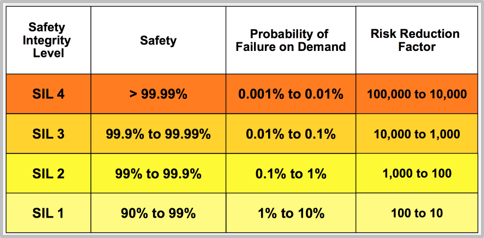What is IEC 61508 Specification ?
The IEC 61508 determines the specific guidelines on the functional safety of electrical/electronic/programmable electronic (E/E/PES) safety-related systems on a seven-part standard. This system was created in 1998 when its three first parts were published, followed by the latest four published in 2000. The standard was developed by the International Electrotechnical Commission (IEC, Geneva, Switzerland), and it dictates the required proper management of the aspects of Safety-Related Systems (SRS) which composes every response function application that takes place to achieve a state of safety when different variables are presented. The standard will not only apply to the process of safety, but to the entire design, specification, concept, operation, use, and the final decommissioning.
The use of IEC 61508 is not limited to big corporations only, given that it can be used by any industrial process that utilizes E/E/PES safety-related systems. It can also be applied in international standard organizations to create the base for the development of sector standards. Because of its accessibility, many certifications are now available in the UK and the U.S. Japan provided standard accreditation and certification, which caused the IEC 61508 to become world-widely recognized.
The Seven Parts of IEC 61508 Specification
The IEC Specification works with seven different parts. These steps are critical for the proper execution of safe performances 61508.
Part 1 Identify the safety and risks of the system, as well as its overall life cycle.
Part 2 Requirements for E/E/EP safety-related systems.
Part 3 Identify the software requirements.
Part 4 Provides definitions and abbreviations which must stay present.
Part 5 Exemplifies the determination for the SIL
Part 6 Offers guidelines for parts 2 and 3
Part 7 Overview of techniques and measures.
The SIL and its Levels
SIL (Safety Integrity Levels) is an important aspect of safety systems and focuses on the functional safety of the systems. There are SIL ratings that state the frequency and severity of the potential hazards. They also determine the performance requirements in order to achieve and sustain safety without failure.
There are four SILs: SIL 1, SIL 2, SIL 3, and SIL 4. The higher the number of SIL, the higher the risk and the stricter the requirements:
The Importance of SIL
Its rating is helpful to understand which safety requirements the system needs to achieve and maintain. These recommendations will vary from software and designs.
Smarter Controllers offers SMART Hydraulic Seft-Contained Emergency Shutdown Controller “ESD-211” SIL2, a system that can be used on oil & gas wells to protect people, installations and environment on Emergency Shutdown Valves (ESDV), Surface Safety Valves (SSV) and any other flowline valves with a single effect actuator. According to the table, Smarter Controller’s ESD SIL2, is much less likely to present failure compared to other in the market. Its smart electronic assistance and touch-screen makes information accurate, reliable, and user friendly.
If you would like to receive more information about the “ESD-211” SMART Hydraulic Seft-Contained Emergency Shutdown Controller “ESD-211” SIL2, please contact us at info@smarter-controllers.com or click here.
More information about IEC 61508 (SIL2) Specification ®, please visit the following links: https://www.61508.org/aboutus/index.php
This publishing was elaborated by Maria Lucila Decia, Senior Producer, Media Services.



